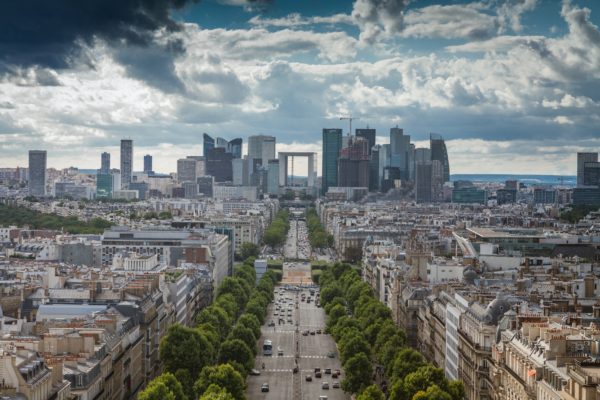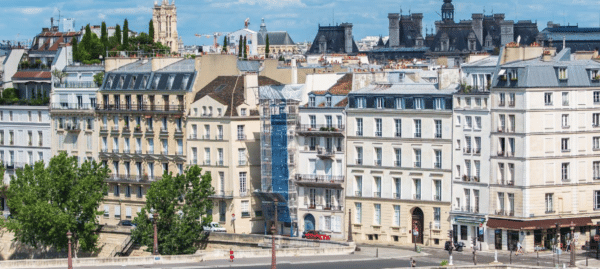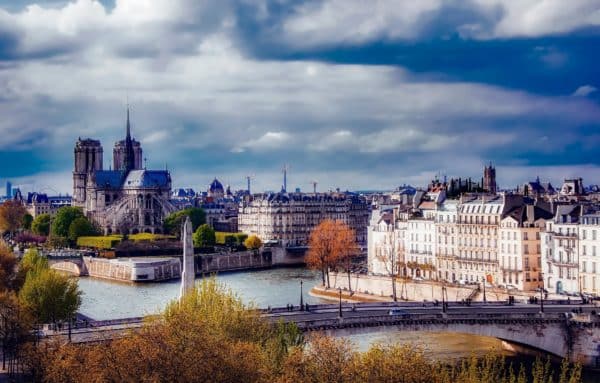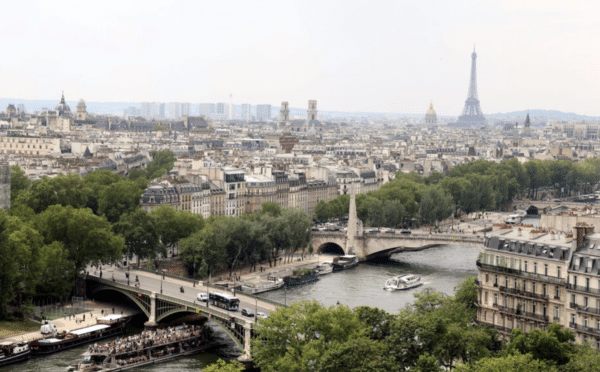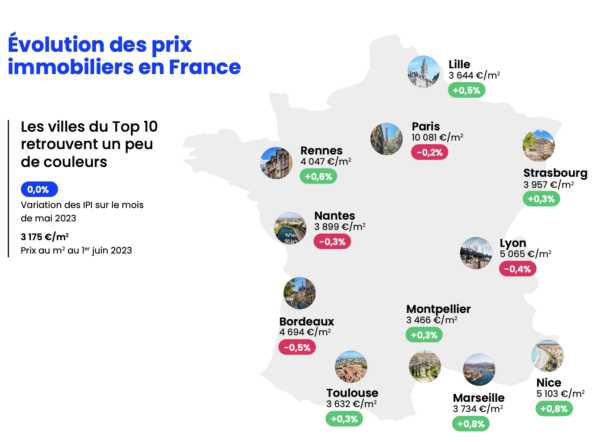Expert Insight, Breaking News, and Insider Stories on Real Estate in Paris
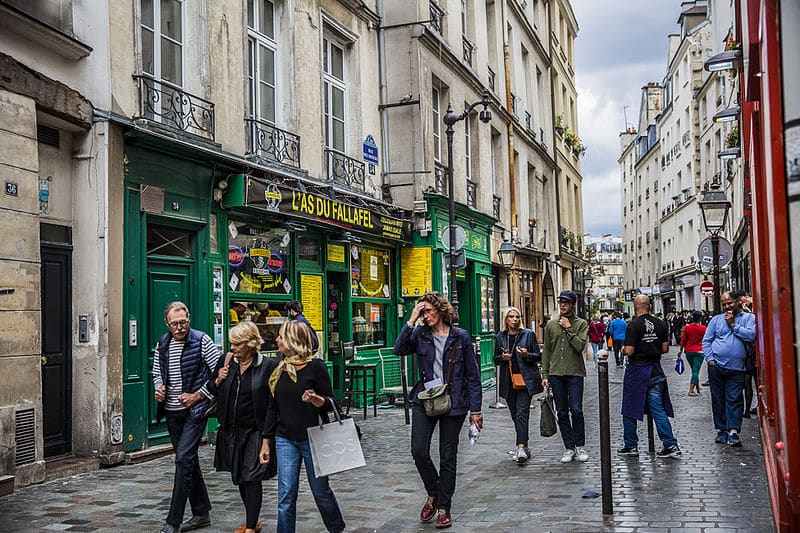
An in-depth look at prices in the heart of Paris: arrondissements 1-4
It’s not news that property prices in Paris are on the rise, with the average price per square meter in more than half of Paris’ 20 arrondissements exceeding €10,000. It is interesting to note, however, that price disparities exist between the small boroughs located within each arrondissement. In this article, we zoom in on the heart of the capital, the first four arrondissements of Paris. In this densely concentrated area, the rarity of properties combined with high demand pushes prices up to around €12,000/m², with the 4th boasting an average price per square meter of €14,000. These arrondissements are especially popular with international buyers, who fall for the charming appeal of historical Paris.
The 1st: capitalizing on its assets

The 1st is one of Paris’ most expensive arrondissements, with an average price per square meter of €12,000.
Within this small, 1.8 km² rectangle, the history of both Paris and France, from Île de la Cité to the Louvre, from Les Halles to the Tuileries, have blended together to create a unique cultural heritage. The charm of this “Old Paris” seduces tourists from all over the world, attracting international buyers and contributing to its dynamic real estate market. Although supply is struggling to satisfy demand, this arrondissement is insensitive to price variation and remains a secure investment for buyers. “This is an arrondissement that continues to perform strongly, and its cultural heritage is an added security for investors,” explains Nathalie Naccache, who manages five Century 21 Fortis Immo branches in the heart of Paris. Up 2.1% in one year, the average price per square meter is increasing at a slower rate than in the rest of the capital, despite already capping at over €11,500.
Demanding buyers in Saint-Germain-l’Auxerrois & Place Vendôme
Of the four boroughs that make up the 1st, the Saint-Germain-l’Auxerrois borough has been the major force driving up prices. Demand never wanes in this area extending along the Seine, from the tip of Île de la Cité to the Tuileries. Along with neighboring Place Vendôme, where sales are rare, this sector boasts some of the most expensive properties in the arrondissement. At the beginning of the year, on Place Dauphine, a 39 m², two-room apartment sold for more than €840,000 (nearly €20,000 per square meter).
Although from rue des Capucines to the very popular rue Saint-Honoré, properties in need of renovation can exceed €12,000/m², the average price per square meter in the Saint-Germain-l’Auxerrois and Vendôme area peaks just above €12,700/m², according to MeilleursAgents. “There is now a sense of agitation among buyers. The discovery of the slightest problem could result in the withdrawal of an offer. The market remains active, but with an increasing level of demand and less immediate selling time for properties that are either too expensive or have an imperfection,” explains Naccache.
Palais-Royal on the rise
Average prices in the Palais-Royal borough, although up by more than 6.7% over two years, are below the arrondissement average. Near the Banque de France and the Comédie-Française, average property prices are around €11,900/m². “The central Paris real estate market benefits from limited supply with strong demand for all types of properties, hence the increase in selling prices,” Naccache analyses. Although the margin for increase seems limited, “customers know that it’s safe investment,” she adds.
Most of the buildings in the heart of Paris date from the 18th century and precede Haussmann’s overhaul of the city. With the supply of small apartments and studios far outweighing that of large apartments, the most spacious properties go for a lot. In this context, if a two-room apartment on rue Molière is sold for €392,000, spaces exceeding 80 m² will surely cost more than 1 million. Even if there is room for negotiation, “when supply matches demand, the property sells within a week,” explains Naccache.
Strong potential in Les Halles
The atmosphere in neighboring Les Halles is very different from that of Palais-Royal. Sitting atop the world’s largest metro station, major brand-name stores jostle chain restaurants, attracting Paris’ young people. Since the inauguration of la Canopée in 2016, the price per square meter in Les Halles has risen by more than 8%, with a 5% increase since the beginning of the year. Prices here are now established well above the Parisian average, and can reach up to €11,491/m² according to MeilleursAgents.
“Although the Les Halles district is rarely a first choice, limited supply in the 2nd makes it all the more attractive,” explains Naccache. With the arrival of local shops and the pedestrianization of some of its major streets, the Les Halles borough is gradually moving up the ranks, despite its “seedy” reputation, that it just can’t seem to shake. However, in such a saturated market, where there is no land for building from scratch, the area still has room for improvement.
More touristy than family-oriented
An arrondissement of great historical and artistic importance, the 1st is not the most suitable for families to settle in, despite the fact that it has three public elementary schools, two preschools, and a middle school. For many buyers, the arrival of airbnb has changed the game, and such investors have chosen to capitalize on the 1st arrondissement’s rich cultural sites, from prestigious museums, to theaters and gardens.
According to Insideairbnb, which lists and details airbnb host activity around the world, nearly 5.7 out of 100 properties are intended for short-term rental, with nearly 9 out of 10 listings offering entire units. Accusing property owners of taking advantage of the heart of the capital, Paris City Hall has denounced this practice, and has proposed banning the first four arrondissements from the platform.
The 2nd: elegant, expensive, and trendy

Despite a small rate of increase in 2018 (+1.5%), the average price per square meter in the 2nd should exceed €11,000 in 2019.
The 2nd is the smallest of Paris’ arrondissements. To the east, we can enjoy its lively neighborhood feel and pedestrian streets, while to the west, we appreciate the cultural heritage of charming “Old Paris”: a chic and trendy combination. Although this arrondissement still has upside potential, with prices having increased by 12% over two years, this momentum has slowed down. Up by 1.5% over the past year, the price per square meter should exceed the €11,000 mark in 2019. Between the gentrification of the Montorgeuil-Saint-Denis area and the revitalization of the Sentier borough, prices are soaring.
Gaillon-Vivienne, rare and expensive
Nestled between the Garnier Opera House and Place Vendôme, the Gaillon district is the most affluent, with prices significantly higher than the arrondissement’s average. Boasting some charming sites, such as rue de la Paix or several of Paris’ 19th century passages couverts, this historic area is a solid investment for buyers. Such advantages can very quickly drive prices up to above €13,000 per square meter: a 45.95 m², three-room apartment on rue Chérubini was recently sold for €619,000.
The neighboring Vivienne district is also highly sought after. Sales volumes here are quite low, although prices continue to rise much like in the rest of the capital. MeilleursAgents reports an average price per square meter of €11,000, an increase of almost 10% in 2 years. Some sales, however, are carried out well above that: just a stone’s throw from Bourse, a 24 m² studio on rue Feydeau sold for 300,000 euros (€12,500/m²).
Like the 1st, the second attracts foreigners and investors in search of a property touched with the prestige of Old Paris whose value is very unlikely to decline. Investing in this sector also means protecting yourself against a possible market downturn.
Montorgueuil, the new Marais
The 2nd’s major price increases in the last two years (up 12%) can be attributed in large part to the transformation of rue Montorgueuil, which extends from Les Halles to rue Réamur. With its cobblestone pedestrian streets and its many terraces, the area is symbolic of a typically Parisian lifestyle. Its intimate, village-like feel has made this area a favorite with young people and foreigners looking for small apartments.
Prices vary between €11,000 and €14,000/m² depending on the condition of the property. A 57 m², three-room apartment on rue Bachaumont sold for more than €14,000/m² while a 63 m² apartment in need of renovations in a neighboring building was sold at around €12,500/m². “Whatever happens, though, a property at market price is sold within two weeks,” explains Alexis Mathieu, Director of a local branch of Laforêt. “The market in central Paris has limited supply, so all properties are in high demand, hence the increase in selling prices,” he adds
Sentier, start-up central
This demand has spread to the Sentier district. Of the many textile workshops that have forged its identity, only a handful remain. Start-ups have invested in its large spaces and many specialty food shops and restaurants have set up shop on its narrow streets. “In 2018, entire buildings on rue d’Aboukir and others on rue Saint-Denis were sold or in the process of being sold, probably intended to house new start-ups,” explains Naccache. This trend is expected to continue, in this sector that has gone from being a deferral market to one that is “in vogue”.
Prices here are constantly increasing but remain affordable compared to the rest of the arrondissement. According to MeilleursAgents, the average price per square meter for an apartment in the area is between €10,000 and €11,500.
Gentrification in Bonne-Nouvelle
Forming the eastern part of the 2nd, the very lively Bonne-Nouvelle borough is on the path to full gentrification. The promiscuous shops and cabarets that once gave rise to its reputation are gradually giving way to bars and concept shops, undoubtedly popping up in the area due to its affordable real estate, that are popular with young people and hipsters. Although many retail shops remain, the mark left by those foreign populations who gave the 2nd its originality is being erased.
Prices fall around €10,000/m² or even less: a 28 m² studio on rue de Tracy recently sold for €275,000 euros (€9,820/m²). Less popular and touristic than neighboring areas, it is the most affordable sector in the arrondissement and offers the greatest long-term growth prospects. It remains to be seen, however, if this quartier will fully gentrify like its neighbors, at the price, perhaps, of its identity.
The 3rd: village chic

Prices in the 3rd arrondissement have increased more over the past 10 years than in any other arrondissement in the capital (+70%).
Between the Marais, which remains a sure bet, and the Arts-et-Métiers and Enfants Rouges sectors, which are increasingly in demand, the 3rd arrondissement is where prices have increased the most in ten years (up 70%!). With a jump of more than 15% in two years, the 3rd is more sought after than ever. Offering mainly two-room apartments, this old area of Paris is very popular with young executives and foreigners. However, with prices on the rise and a shortage of properties falling over the area, it’s becoming ever more expensive to settle in this “sophisticated village” where the price per square meter is approaching €12,000.
The Marais, a force of elegance
Although the Marais is one of the oldest districts in Paris, it exudes a unique vitality in the capital. Spared from major 19th century construction projects, it has preserved its narrow streets and the private mansions that house its prestigious cultural institutions such as the National Archives and the Picasso Museum. In the Haut Marais, one of Paris’ most expensive areas, the price per square meter is close to €13,000. “With fewer and fewer properties on the market and many buyer requests, exceptional homes can reach unrivaled prices in the capital, with customers who feel it’s the right time to sell,” explains Caroline Baudry of Barnes, 3rd and 4th arrondissements. Along the most popular streets such as La Perle or Les Quatre-Fils, sales can even rise to €15,000 or €20,000 per square meter.
Flash sales
“The most sought-after properties, those with a balcony or on the top floor with an elevator, can go in a few hours during a flash sale,” adds Baudry. Large apartments, a scarce commodity in this neighborhood, generally go for millions of euros. A stone’s throw from the Hôtel d’Hérouet, a 110 m² five-room apartment on rue Vieille-du-Temple sold for €1.49 million.
“We are in a very good year, with a constant increase in prices. The Marais is particularly popular with foreign customers looking for prestigious properties,” explains Baudry. Prices in the Sainte-Avoye borough, which are on average cheaper than in neighboring les Archives, have exploded all the same. Over the last two years, they have increased by more than 15%, reaching €11,754 per square meter, according to MeilleursAgents. The shortage of available properties in the Haut Marais also contributes to the popularity of neighboring districts.
Les Enfants Rouges
Over the past year, prices in les Enfants Rouges have risen sharply, with MeilleursAgents noting a 7% increase. High-end wine bars and bakeries have set up shop around the former enclos des Templiers, close to the charming square du Temple, with the real estate market following close behind. Sought after by Paris’ bobos for its dynamic neighborhood feel, Les Enfants Rouges is no longer a deferral market.
According to MeilleursAgents, although properties are sold around €12,000 /m², prices can still very well rise. Around rue de Bretagne, which houses the oldest covered market in the capital after which the borough is named, prices can rise up to €14,000/m². Meanwhile, on rue Portefoin, a 95 m² three-room apartment sold for 1.16 million (€12,210/m²).
Arts et Métiers on the rise
Extending from the western part of the 3rd to Porte Saint-Martin in the north, Arts et Métiers is the most affordable borough of the arrondissement. With an average price per square meter of €10,000 (compared to an average of more than €11,700/m² for the entire arrondissement), “it is the one area of the 3rd where prices are not yet prohibiting buyers from looking elsewhere”, explains Caroline Baudry. On rue Meslay, an unrenovated, 136 m² apartment sold for €8,824 per square meter.
According to MeilleursAgents, the average price per square meter in this area has risen by more than 13% since the renovation of Place de la République in 2013. Increases are still expected in 2019.
The 4th: Luxury on the Right Bank

With an average price per square meter above €14,000, the Notre Dame borough is the most expensive in the capital after the Champs-Elysées.
Notre-Dame, Ile de la Cité and Île Saint Louis, Place des Vosges, Le Marais… the 4th arrondissement has plenty to seduce buyers. Already very expensive, but with less marked price variations, properties in the 4th sell for around €12,500 per square meter on average. However, certain neighborhoods within the arrondissement boast even great price averages, making them among the most expensive in the capital.
The prestige of Notre-Dame
The prestigious Notre-Dame area, which includes Île Saint-Louis and a part of Île de la Cité, is one of the most costly in Paris. Although the rate of increase here has been limited (up 3.7% over the past five years), it’s because real estate prices in this area were already on the high end. Very few apartments are sold here, such rarity explaining the district’s average price per square meter of €14,000 according to MeilleursAgents. This is the second most expensive of Paris’ 80 quartiers behind les Champs-Elysées.
Welcoming 12 million visitors each year, France’s most popular monument, Notre-Dame, draws a lot of attention to this neighborhood, which is highly sought after by international buyers. Already back in 2007, L’hôtel Lambert, a 17th century gem dominating the point of Île Saint-Louis, was purchased by a Qatari prince for 80 million euros. 11 years later, south-facing properties on the island’s riverbanks are still as rare and expensive as ever, with an average price per square meter that can climb up to €25,000 or €30,000.
Saint-Merri makes up for lost time
The Saint-Merri neighborhood extends from the riverbanks of the Seine to the beginning of the Marais and includes Hôtel de Ville and Pompidou. This neighborhood is home to BHV and boasts dynamic commercial streets, fed by les Halles to the west and the small shops of the Marais to the east. Completely transformed since its renovation, rue Rambuteau, which now features wider sidewalks and additional green spaces, can now more properly welcome guests heading to the restaurants that have established its gastronomic reputation. Here, properties sell around €11,900 per .
Although this is the most accessible area of the arrondissement, it still very much above the Parisian average, which hovers around €9,450/m² according to MeilleursAgents. Behind the BHV, a four-room, m² apartment on rue de la Verrerie sold for €289,000. “For numerous foreigners looking for a pied-a-terre in this central district of Paris or for those looking for an apartment in a lively neighborhood, small properties go very quickly,” explains Caroline Baudry.
Saint-Gervais, the gentrified Pletzl
Fashion and luxury shops have replaced the kosher butcher shops and delis along the small medieval streets of le Pletzl, the old Jewish quarter of Paris. Much like the current trend taking place in the Sentier borough, gentrification is hitting the area around rue des Rosiers. In this northern part of the Marais, tourists and young couples find the atmosphere of a village in the heart of Paris. Prices have jumped 16% in five years, the largest increase in the 4th. On rue du Roi-de-Sicile, a 75 m² four-room apartment recently sold for 1 million euros. The authenticity of Saint-Gervais, although undermined by the gentrification that affects all of Paris’ central districts, still continues to attract buyers.
Arsenal on the rise
Originally more residential and less lively than its neighboring districts, Arsenal is about to undergo major changes in the following years. Place de la Bastille, which borders the neighborhood to the east, is under major construction to make it more pedestrian-friendly. On the site of the former Préfecture de Paris (rue Agrippa-d’Aubigné), a new housing project will be completed by the end of 2021, with rices start at €388,900 for a studio €1,449,500 for a four-room apartment. Real estate prices, which have already risen by 11.9% over the past two years, could thus continue to increase.
Properties around rue Saint-Antoine and boulevard Henri-IV are currently selling around €12,381/m². Although this figure is significantly higher than the Parisian average, it can increase even further for properties located near Place des Vosges. With its symmetrical, Louis XIII-style buildings and lime trees, the oldest of the capital’s five royal squares is still one of the most popular areas in Paris. Near Victor Hugo’s former residence, it is not uncommon to see properties being sold around €20,000/m².
Sources: Immobilier Paris : le 4e ou le luxe côté rive droite ; Immobilier Paris : le 3e arrondissement, village sophistiqué ; Immobilier Paris : le 2e arrondissement, chic, cher et branché ; Immobilier Paris : le 1er arrondissement capitalise sur son patrimoine
Cover photo: ninara from Helsinki, Finland [CC BY 2.0]
Contact Paris Property Group to learn more about buying or selling property in Paris.



